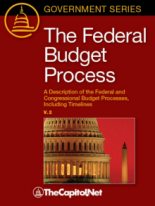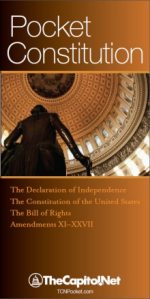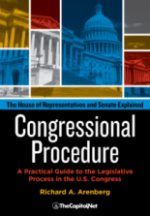From the Congressional Glossary – Including Legislative and Budget Terms
Joint Explanatory Statement of Managers

Portion of the conference report providing the history, explanation, and intent of the conferees.
The conference report and joint explanatory statement are two distinct documents. The conference report contains a formal statement of the procedural actions the conferees took and the formal legislative language the conferees propose. The joint explanatory statement is a more readable document. It identifies the major matters in disagreement, and then summarizes each chamber’s position and the conferees’ recommendations. The joint explanatory statement also often contains an explanation of the conferees’ intent. Two copies of each document must be signed by a majority of the House conferees and a majority of the Senate conferees. The documents are printed in the House portion of the Congressional Record, and are also printed together as a single House committee report. Although Senate rules require printing as a Senate document as well, the Senate usually waives this requirement.
House rules provide that a conference report cannot be called up for consideration until the third calendar day (excluding Saturday, Sunday, or holidays, unless the House is in session) after the conference documents have been filed. Furthermore, copies of the conference report and joint explanatory statement must be available at least two hours before the chamber begins consideration. Both requirements can be waived by unanimous consent or by adoption of a special rule from the Rules Committee containing a waiver of the requirements.
Instructive or directive language might be included in the joint explanatory statement to a conference report on a measure.
The joint explanatory statement explains in lay terms what was in the House text and the Senate text of the measure in conference and what is the agreement recommended by the committee on conference. A majority of conferees from each chamber must sign not only the conference report but also the joint explanatory statement.
State of Competition in the Pharmacy Benefit Manager and Pharmacy Marketplaces
Also see
- Conference Report (CongressionalGlossary.com)
- Understanding Report Language and Legislative History (CongressionalGlossary.com)
- § 6.280 Conference Committees, § 7.50 Congressional Budget Process, § 8.73 Legislative History, § 12.20 Joint Explanatory Statement, in Congressional Deskbook
- § 2.31 Resolving Differences by Amendment or Conference, App. 4.120 Joint Explanatory Statement, in Legislative Drafter’s Deskbook
- Chapter 6.E. Conference Reports in Congressional Procedure
More
- Joint Explanatory Statement of Managers – Google search
- Conferees / Managers / Instruct Conferees (CongressionalGlossary.com)
- “Conference Reports and Joint Explanatory Statements,” CRS Report 98-382 (5-page PDF
 )
) - “Resolving Legislative Differences in Congress: Conference Committees and Amendments Between the Houses,” CRS Report 98-696 (40-page PDF
 )
) - “The Congressional Appropriations Process: An Introduction,” CRS Report R42388 (28-page PDF
 )
) - “Advance Appropriations, Forward Funding, and Advance Funding: Concepts, Practice, and Budget Process Considerations,” CRS Report R43482 (34-page PDF
 )
) - “The Bipartisan Budget Act of 2018 and an FY2019 Budget Resolution,” CRS Report R45157 (34-page PDF
 )
) - “The ‘Deeming Resolution’: A Budget Enforcement Tool,” CRS Report RL31443 (39-page PDF
 )
) - “Covert Action and Clandestine Activities of the Intelligence Community: Selected Notification Requirements in Brief,” CRS Report R45191 (15-page PDF
 )
) - “Legislative Procedure in Congress: Basic Sources for Congressional Staff,” CRS Report RS21363 (12-page PDF
 )
)
Courses
- Congressional Operations Briefing – Capitol Hill Workshop
- Drafting Federal Legislation and Amendments
- Writing for Government and Business: Critical Thinking and Writing
- Custom Training
- Congressional Operations Poster, with Federal Budget Process Flowchart
- Federal Budgeting, a Five-Course series on CD
- Congress, the Legislative Process, and the Fundamentals of Lawmaking Series, a Nine-Course series on CD
Publications

The Federal Budget Process 2E

Pocket Constitution

Citizen’s Handbook to Influencing Elected Officials: A Guide for Citizen Lobbyists and Grassroots Advocates

Congressional Procedure
CongressionalGlossary.com, from TheCapitol.Net
For more than 40 years, TheCapitol.Net and its predecessor, Congressional Quarterly Executive Conferences, have been teaching professionals from government, military, business, and NGOs about the dynamics and operations of the legislative and executive branches and how to work with them.
Our custom on-site and online training, publications, and audio courses include congressional operations, legislative and budget process, communication and advocacy, media and public relations, testifying before Congress, research skills, legislative drafting, critical thinking and writing, and more.
TheCapitol.Net is on the GSA Schedule, MAS, for custom on-site and online training. GSA Contract GS02F0192X
TheCapitol.Net is now owned by the Sunwater Institute.
Teaching how Washington and Congress work ™

